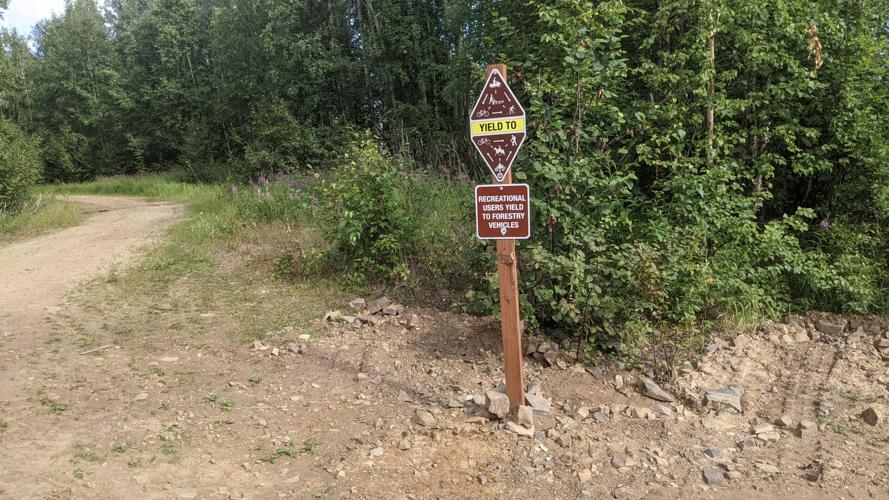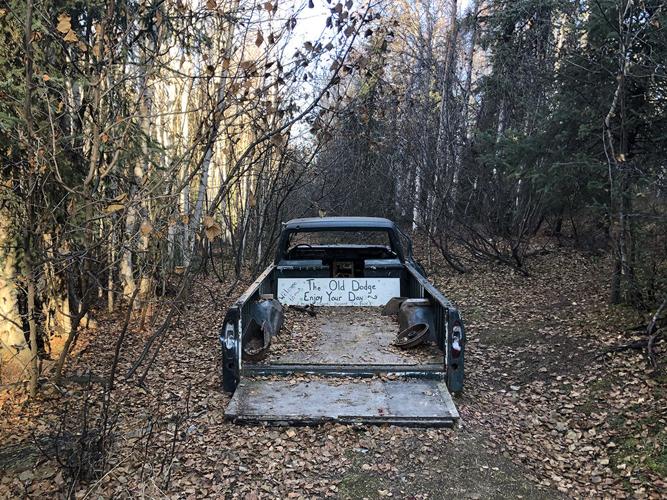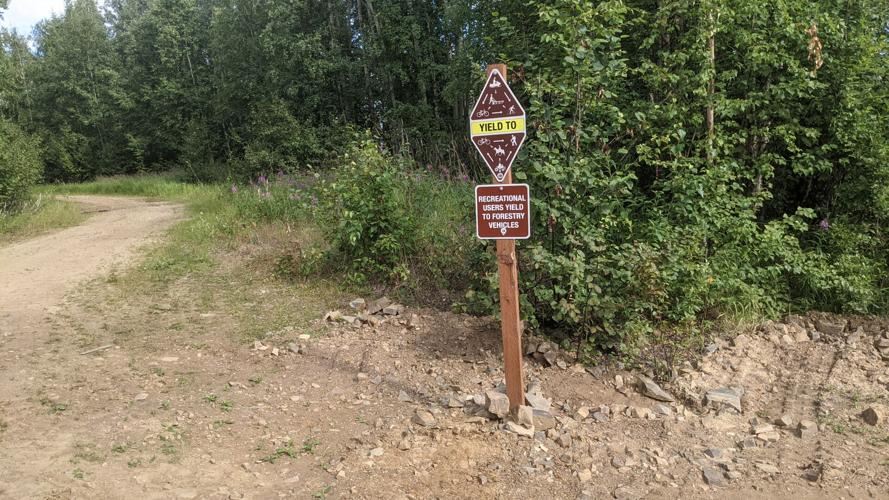A proposed ordinance that would improve access to recreational trailheads hit the Fairbanks North Star Borough Trails Advisory Commission on Monday for input.
Community Planning Director Kellen Spellman said Ordinance 2025-08 is important and something the trails commission asked for in January 2024. Borough Mayor Grier Hopkins and Assemblywoman Kristan Kelly co-sponsored the ordinance.
The ordinance would provide more flexibility for zoning trailheads and other trail “facilities” on both public and private property. Spillman said the borough zoning code makes this task extremely difficult.
“There are a lot of hoops to jump through, and this [ordinance] will make it a lot easier,” Spillman said.
One example is a trailhead the Interior Alaska Land Trust set up on land it owns about two years ago.
“It was extremely cumbersome,” Spillman said. Trailheads considered for areas in the borough’s outdoor recreation zone — the only development option afforded under that designation.
“It’s meant for recreation and to protect open space,” he said. To build the trailhead, the land trust had to rezone its property, which requires public hearings and risks future property values because the rezoning severely limits development.
The ordinance would remove the conditional use permit requirement for outdoor recreational zones.
The ordinance defines “organized trail facility,” including trailheads and related infrastructure such as parking areas, restrooms, information kiosks, warming huts, and gates. The definition does not include trail access points located in rights-of-way or access easements, trails, or trail easements.
Trailheads and other facilities aren’t allowed in residential zones at all. The ordinance would allow that option through a conditional use permit. Applicants can range from private landowners to the borough.
Spillman said those options should be considered if the borough wants to implement its updated comprehensive trails plan.
“We should look at our zoning code and see where we can allow these outright and ... or loosen the rules a little in residential zones,” he said. The borough’s Planning Commission would have oversight for permits in residential areas, including setting conditions for trailheads.
Spillman added that drafting the ordinance required extensive research and collaboration.
“We pulled so many zoning ordinances from across the country to make something like this work,” Spellman said. “We have such a unique and amazing trail system that there wasn’t a comparable zoning ordinance or trail system elsewhere in the country.”
Kayde Whiteside, the borough’s long-range planner, said the ordinance clearly states that a conditional use permit would be required in residential areas. She noted several proposed trailheads in the trails plan are within residential areas.
“We wanted to reduce that burden to applicants to develop these trailheads within our community,” Whiteside said. Many of them are in low-density neighborhoods and the borough will have to be “sensitive to users and property owners in those areas.”
Kelly, the ordinance co-sponsor, noted that many disagreements during the trails plan process involved a lack of trailheads.
“Where people parked created unsafe exits and entries into the trail system,” Kelly said. “I’m really excited to see this go forward.”
Commissioner Helyn Lefgren said she had concerns about maintenance and the potential inclusion of restrooms at trailheads that could be misused.
“I could see people in the neighborhood being upset with the lack of plowing in a parking area, especially if you have bathrooms there that could be inviting people to stay overnight,” Lefgren said.
Spillman called maintenance a tricky topic, as trailheads are currently limited to one zoning designation. He noted if the borough built a trailhead, it would be responsible for maintaining it.
He said the conditional use permit process becomes a valuable tool because it requires private developers to meet certain requirements. For example, with the Interior Alaska Land Trust trailhead, the Planning Commission required the inclusion of a gated entry to limit undesired activities.
“The conditional use permit will allow the Planning Commission on a very case-by-case basis to consider all those different things like maintenance or impacts to the neighborhood and put conditions on that permit they are issuing,” Spillman said.
Spillman said most applicants who include restrooms as part of their permit will likely be governmental entities. He said the borough code enforcement officers step in for applicants who violate conditions. The borough enforcement process includes a series of fines and potential litigation.
Commissioner Rod Boyce asked about liability and injuries at a trailhead.
Borough trails coordinator Andrea Jacobs said owners of undeveloped land aren’t liable under state statute unless issues arise from acts or omissions of gross negligence, reckless, or intentional misconduct that causes injury or death to a person.
“It would depend on the state’s definition of whether a trailhead is an improvement of the land,” Jacobs said. “It’s difficult to answer those questions not knowing the specific case.”
Spillman added that a private landowner will unlikely want to create a trailhead. Instead, nonprofit organizations like the Interior Alaska Land Trust would likely pursue this goal.
Boyce cautioned that people who see the word trailhead will automatically think something might be open for public access.
“Do we even need the word when we’re talking about trail facilities?” Boyce asked.
Max Plichta, the commission chair, said the ordinance can be as important as the updated trail plan itself “for large public-sector actors that are largely organizations developing trailheads and facilities.”
“This would open up the ability for the Bureau of Land Management, the parks service, or the borough itself to utilize trail facilities a little more broadly,” Plictha said. “This would benefit the trail user in Fairbanks.”
He added it’s likely “exceedingly rare for a private entity to apply for these permits.”
Richard Shideler asked whether a private landowner could secure a conditional use permit for commercial purposes and then charge for use of a private trail network.
Spillman said there’s always that chance but it would be looked at “very carefully during the conditional use permit process.”
The trails commission voted unanimously to recommend adoption by the borough Assembly. The ordinance will go to the Planning Commission for recommendations on May 27 and back to the Assembly by June 13.



